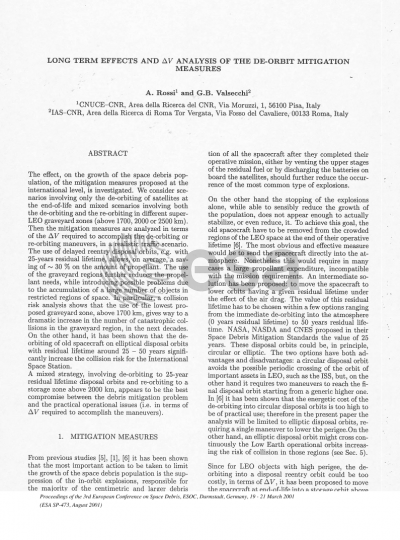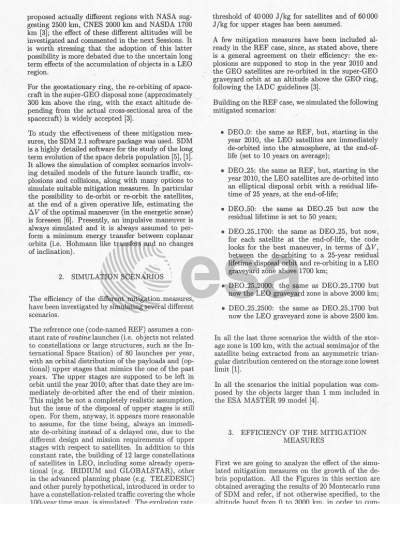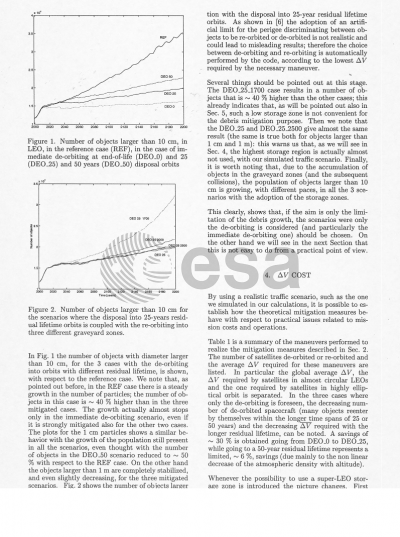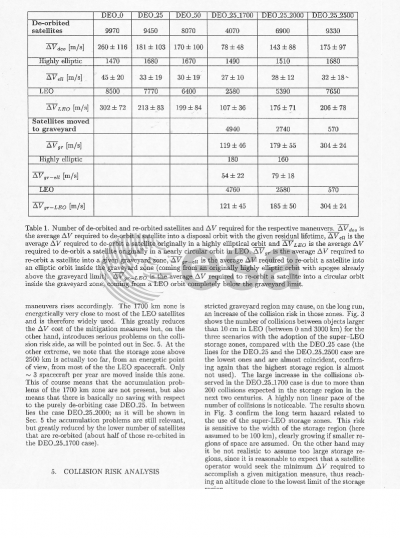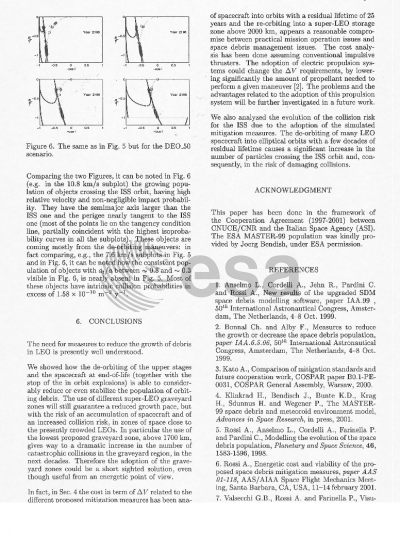Document details

Abstract
The effect, on the growth of the space debris population, of the mitigation measures proposed at the international level, is investigated. We consider scenarios involving only the de-orbiting in different super-LEO graveyard zones (above 1700, 2000 or 2500 km). Then the mitigation measures are analyzed in terms of the DeltaV required to accomplish the de-orbiting or re-orbiting maneuvers, in a realistic traffic scenario. The use of delayed reentry disposal orbits, e.g. with 25-years residual lifetime, allows, on average, a saving of ~30% on the amount of propellant. The use of the graveyard regions further reduces the propellant needs, while introducing possible problems due to the accumulation of a large number of objects in restricted regions of space. In particular, a collision risk analysis shows that the use of the lowest proposed graveyard zone, above 1700 km, gives way to a dramatic increase in the number of catastrophic collisions in the graveyard region, in the next decades. On the other hand, it has been shown that the de-orbiting of old spacecraft on elliptical disposal orbits with residual lifetime around 25 - 50 years significantly increase the collision risk for the International Space Station. A mixed strategy, involving de-orbiting to 25-year residual lifetime disposal orbits and re-orbiting to a storage zone above 2000 km, appears to be the best compromise between the debris mitigation problem and the practical operational issues (i.e. in terms of DeltaV required to accomplish the maneuvers).
Preview
